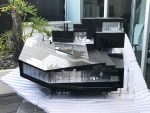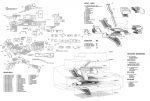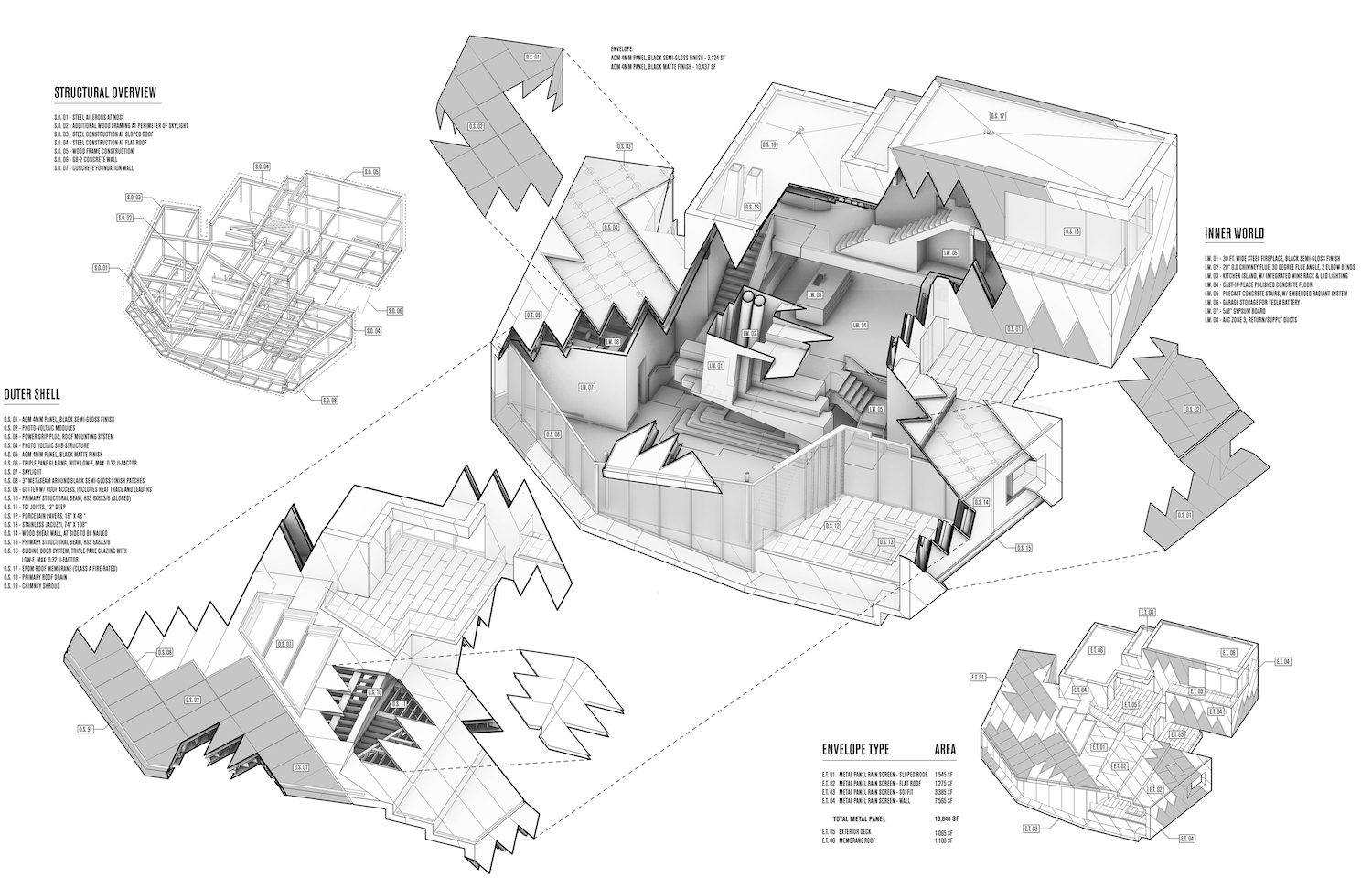A black aeronautic mass is taking shape in Utah’s Wasatch Range. Dubbed the Dark Chalet, the project, designed by Los Angeles-based firm Tom Wiscombe Architecture (TWA), is a private residence perched prominently (and precariously) on Powder Mountain within the under-construction Summit Powder Mountain ski resort. The project is a demonstration of the firm’s characteristic playfulness and dedication to innovative design practices and captivates with gravity-defying structural work, an aluminum-composite rainscreen, and a photovoltaic panel array which effectively transforms the Dark Chalet into a veritable mountainside power plant.
The project, inspired by both real and imagined cavernous ski chalets and castles, is centered on a 28-foot-wide fireplace placed within a column-free grand hall. The setting, 10,000 feet above sea level and on a treacherously steep hill, demanded the pouring of an incredible foundation and the construction of a complex steel mesh, painted yellow-and-grey to instill a toy-like quality to the structural work.
In line with TWA’s design approach and greater body of work, the Dark Chalet exemplifies the firm’s commitment to plan and detail a facade for integrated project delivery. “In the Dark Chalet, we are working with Southam Associates to deliver the black-on-black rainscreen envelope: we have assumed the 3D detailing to control how the pattern wraps, how the ‘metaseams’ are expressed, and how the photovoltaics get embedded in the system,” said TWA principal Tom Wiscombe. “We began with a full building drone scan of the waterproofed framing, and then squared our 3D model with the scan; Southam is providing further as-built dimensions as needed, and we are issuing fab files.”
Envisioned as something of a glistening “black diamond” nestled atop a snowy mountainside, the Dark Chalet is topped with an array of black glass resembling photovoltaic panels seamlessly blended with glossy aluminum composite skin. “The design mantra of the Dark Chalet has been ‘zero hardware,’ meaning that we want to maintain mysterious effects by suppressing signs of how it was built—not unlike an SR-71 spy plane,” Wiscombe noted. Once complete, the photovoltaic panels are projected to bring the building system to 362 percent energy positivity; enough to power itself and a handful of neighbors.
To learn more about the Dark Chalet and other TWA projects, join Tom Wiscombe and LMN Architects associate Mark Nicol on December 3 at “Facades+: Enclosure Innovations on the West Coast,” where the two will dive into their respective firms’ methodologies for facade innovation during the panel “Research & Development: In-House Teams Driving Innovation.”












